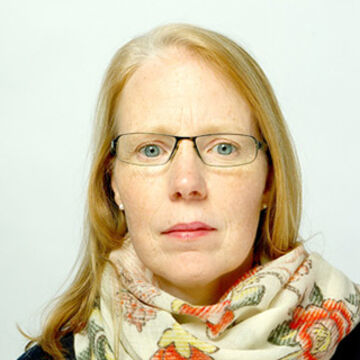| Beginning Lithography |
Printmedia |
2003 (001) |
Fall 2025 |
|
Description
In this course students are introduced to stone lithography. Through this planographic printing process it is possible to translate hand-drawn and hand-painted images into multiples and/or multi-color pieces. Emphasis is placed on gaining a thorough understanding of the techniques and principles of lithography through class demonstrations, instruction, individual projects, discussion and critiques.
|
Class Number
1599
Credits
3
|
| Designed Objects Studio One |
Architecture, Interior Architecture, and Designed Objects |
2020 (001) |
Spring 2025 |
|
Description
As the beginning course in the Designed Objects department, students will have an opportunity to explore different methods of working in order to begin establishing a practice that works best for them. Students will be building a strong foundation of skills and techniques needed to navigate an informed design process and successfully complete a design brief. In this hands-on class, students will learn how to find inspiration for an idea, develop that idea into a concept, and use that concept to design and fabricate a high-level, final prototype. Basic research theories and methods are introduced which are then applied towards studio projects. Fabrication and prototyping techniques are also incorporated in order to test out ideas and discover new ones. Students advance through definition, research, ideation, sketching, and modeling phases toward two? and three?dimensional representations (digital and physical) of their work that are orally defended during group critique.
Readings and lecture content will vary and will focus on examples of historically relevant and contemporary designers, artists, studios, and design movements; as well as design practices that highlight different motivations of the designer.
In addition to the two main projects that focus on different methods of approaching design? where students will be producing high-level prototypes, this workshop-style class consists of one-day projects and exercises designed to introduce techniques and skills such as technical drawing and sketching, form-finding, prototyping, and inspiration research, among others.
This course requires students to have a laptop that meets SAIC's minimum hardware specs and runs the AIADO template.
|
Class Number
1260
Credits
3
|
| Designed Objects Studio Three |
Architecture, Interior Architecture, and Designed Objects |
3022 (001) |
Fall 2025 |
|
Description
What does it mean to design for other people? The third course in the Des Ob studio sequence considers how designers are able to understand others and then design for them. We will investigate the things that people do, the objects that they use, how they feel and what they might need, want or desire in order to understand and then design meaningful objects. Students have the opportunity to work with design research, advance their design skills and complete more involved projects. This course requires students to have a laptop that meets SAIC's minimum hardware specs and runs the AIADO template.
The class introduces relevant research and visualization tools used to gather research insights and generate design ideas. Sketches, mock-ups and models are used to test discuss, and refine research insights, design ideas and propose final concepts.
Students can expect to complete one to two projects over the semester and present their progress throughout the term.
|
Class Number
1295
Credits
3
|
| Multiples Studio |
Architecture, Interior Architecture, and Designed Objects |
3034 (001) |
Spring 2025 |
|
Description
This interdisciplinary studio class investigates the intersection of printmedia, artists? multiples and packaging as an entry point into making and thinking about multiples as a format for studio production. The history of artists? multiples (loosely defined as small-scale editioned or multiply produced three-dimensional works) includes many examples that use, or appropriate, printed elements and packaging in some way. This history, along with our daily experience of packaging (the many boxes, folders, labels, pamphlets, flyers and cartons found in nearly every aspect of contemporary life) offers a wealth of connections to consider and work from.
Students will be introduced to a range of printing and paper construction techniques within the Printmedia studio. These include plate-based lithography (with hand-drawn, digital and photo options) and pattern layout for packaging along with other selected tools and techniques. In addition, students will have the opportunity to use SAIC labs such as the Service Bureau and digital fabrication centers. Examples, short readings, and a visit to the Joan Flasch or other related collections will support project development and discussion.
Students can expect to complete three to five projects and participate in two critiques.
|
Class Number
2080
Credits
3
|
| Multiples Studio |
Printmedia |
3034 (001) |
Spring 2025 |
|
Description
This interdisciplinary studio class investigates the intersection of printmedia, artists? multiples and packaging as an entry point into making and thinking about multiples as a format for studio production. The history of artists? multiples (loosely defined as small-scale editioned or multiply produced three-dimensional works) includes many examples that use, or appropriate, printed elements and packaging in some way. This history, along with our daily experience of packaging (the many boxes, folders, labels, pamphlets, flyers and cartons found in nearly every aspect of contemporary life) offers a wealth of connections to consider and work from.
Students will be introduced to a range of printing and paper construction techniques within the Printmedia studio. These include plate-based lithography (with hand-drawn, digital and photo options) and pattern layout for packaging along with other selected tools and techniques. In addition, students will have the opportunity to use SAIC labs such as the Service Bureau and digital fabrication centers. Examples, short readings, and a visit to the Joan Flasch or other related collections will support project development and discussion.
Students can expect to complete three to five projects and participate in two critiques.
|
Class Number
1554
Credits
3
|

